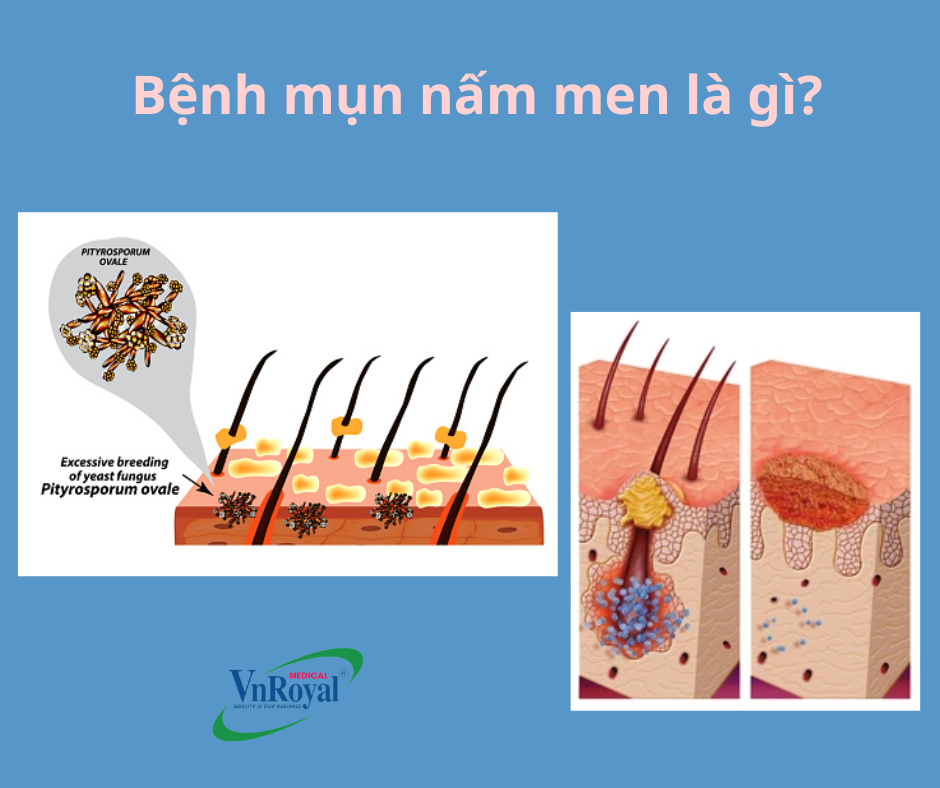Pityrosporum folliculitis, also known as Malassezia folliculitis, is a condition that presents as breakouts on your skin. It may be considered common and under-recognized. It occurs when a specific genus of yeast called Malassezia, which naturally occurs on your skin, infects the hair follicles.

1. What is Pityrosporum folliculitis?
Sometimes people with this condition think they have recurring acne and try to treat it as they would for regular acne. This makes it easy to miss or misdiagnose.
However, an easy way to tell the difference between the two conditions is to compare the symptoms. Pityrosporum folliculitis lacks comedones, which are the whiteheads and blackheads that are common characteristics of acne. It can also be a very itchy condition, while acne is not.
People who have pityrosporum folliculitis are sometimes more likely to have other conditions like dandruff, which is also known as seborrheic dermatitis. Both conditions are linked to the Malassezia yeast.
2. What are the symptoms of Pityrosporum folliculitis?
Pityrosporum folliculitis is typically found on the upper trunk, which is:
the upper back
chest
shoulders
The condition tends to occur in areas where your skin is oilier. Small bumps, called pustules, are found on your skin in the affected area. These pustules are focused on a hair follicle. These bumps tend to be very itchy.
3. What causes Pityrosporum folliculitis?
Pityrosporum folliculitis is caused by an overgrowth and infection of the hair follicle by the yeast Malassezia on your skin. This naturally occurring yeast gets into hair follicles on your skin and causes breakouts to erupt on your skin’s surface.
Predisposing factors to this disorder may be topical or oral antibiotic use as well as physical conditions that cause immunosuppression.
4. How is Pityrosporum folliculitis diagnosed?
Pityrosporum folliculitis is considered a benign, but challenging, condition. The symptoms might make you uncomfortable, but they generally aren’t a sign of a more serious medical condition.
However, if your condition becomes very difficult to treat and is widespread, further lab tests may be done to look for any underlying immunosuppression.
Diagnosing pityosporum folliculitis isn’t typically a straightforward process, as it sometimes looks like a more common condition called acne vulgaris.
If you’ve tried traditional acne treatment methods and they aren’t relieving your symptoms, ask your doctor if you may have pityrosporum folliculitis.
To get a proper diagnosis, see a dermatologist. You can connect to a dermatologist in your area using the Healthline FindCare tool. You may want to specifically ask if you have this condition. The doctor will need to scrape your skin gently in the area where you have symptoms to get a skin sample.
This sample will be evaluated under a microscope and tested to see if you have pitryosporum folliculitis. Additionally, sometimes a small skin biopsy may be needed to make the diagnosis.
5. How is Pityrosporum folliculitis treated?
There are several treatments a doctor may prescribe for this condition.
An antifungal is needed to treat pityrosporum folliculitis. An oral antifungal, such as itraconazole or fluconazole is used.
These antifungals are off-label treatmentsTrusted Source because they’re not FDA-approved for this specific condition. Topical treatment with an antifungal shampoo can also be used in those who don’t want or cannot tolerate oral antifungal treatment.
If you’d like to treat pityosporum folliculitis at home, there are several products and home remedies you can try.
You can purchase selenium sulfide shampoo, such as Head and Shoulders, Neutrogena, or a pharmacy brand. The shampoo is usually easy to apply since you can let it drip onto your chest, back, or shoulders after using on your neck or scalp.